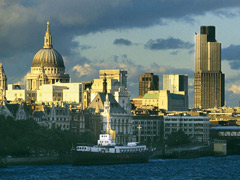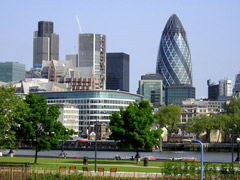


London’s skyline will resemble a mini-Manhattan even more than it does now. The Shard, which for a few days after completion was the tallest building in Western Europe, will be dwarfed by new, super-tall, highly eco-efficient constructions. But these will never measure up to China’s skyscrapers, as the country continues on its mission to become the world’s first superpower.
Social media takes on a new lease of life, quite literally, with smart phone applications helping with all aspects of everyday living. One example is a new app called ‘How It Is Right Now’, which lets subscribers see live footage of the inside of a nightclub to gauge how busy it is and whether they will like the music. At first numerous nightclubs sign up to this very enthusiastically, only to realise they’ve shot themselves in the foot as the app results in a lot of people staying at home frantically checking their phones, waiting to find out when is the best time to head out. This time never comes as audiences are all at home on their phones.
In fact, if we look even further ahead by say, another 100 years, we find that smart phones cover so many different activities that they have pretty much overtaken the human race, which have become the accessory to the phone as the main nerve centre.
Museums are replaced by interactive experiences via the internet, with the museum sites now taken over by coffee shops part-owned by branches of a popular supermarket chain.
The high street becomes ever more homogenised with a minimum of three branches of a global supermarket chain in every high street. Neighbourhoods that previously resisted the conglomerate all succumb, albeit those that pride themselves on their village feel require a stripped back, more rustic décor compared to other branches.
Fashion designers finally replace models with coat hangers, claiming they make the clothes look far better than any living model ever could.
A new breed of celebrity is created via social media sites, by adding several hundred people as friends, who the celeb then refers to as their “fanbase”. They upload the minutia of their lives onto the site, often taking part in activities purely to be able to document them online and watch how many people click “like” on their actions.
\n\nFares for public transport rise to astronomical heights, and the measures to ensure everyone pays up become nothing short of draconian. The oyster has been replaced with – you guessed it – a smart phone app, and as well as tapping it upon entry to the station/bus it will become necessary to show it several times to inspectors during even the shortest journeys. Anyone who has misplaced their fare between getting on and the inspection is promptly marshalled off and the police called. On the plus side, engineering works on all lines are finally all completed to a high standard, and the new, fast transport system rarely breaks down (this is one we’d really like to see happen).
But it’s not all doom and capitalist gloom. Huge investments have been made in recycling, or should we say “upcycling”, from individual household waste to food in supermarkets that is nearing its sell by date that can’t be sold. Commercial food enterprises are fined for not striking up deals with food distribution charities, who then deliver the food to homeless shelters. Speaking of shelters, we see an increase in centres that provide everything from meals to entertainment and haircuts – the latter are things that seem trivial but are actually really important. Funding for these comes from a 0.0001% tax levied on high earning businesses.
It’s not really possible to imagine London being more diverse than it is, but each successive recession forces business to drum up new ways of making business. Thus delicacies like Korean deep-fried sea cucumber are now found on the most suburban of high streets, and leisure centres are now multipurpose venues offering dining, dancing, retail and r&r all under one roof. Restaurants \n\nA cap is finally imposed on the number of properties owned by landlords, with a maximum of two medium-sized properties within Greater London. Landlords are also required to get a licence to ensure they are able to provide the best possible service to their tenants. Thus the role of landlord goes from being a lucrative private sector job to almost that of a government worker on a merely profitable, no longer astronomical salary.
And what about regeneration? Well, the concept has become redundant as there are simply no more areas left to gentrify. This has pros and cons, one benefit being that there are no price discrepancies in terms of postcode, but the overall cost of living has risen. Buying a home is a privilege reserved for the super-rich, and those on lower incomes are forced to move out of the city, making London almost double in size.
With each passing year being “the hottest on record”, “the wettest since 2013”, etc, Londoners tire of the variable seasons. Central heating systems now feature a climate control device whereby it’s possible to alter the weather conditions of the home, with settings for crisp and autumnal (while remaining warm and cosy), to sweltering heat complete with bright, sunny days. Thus households can choose their season according to their own personal routine, regardless of the time of year; seasons as we know them become a thing of the past.
What things do you envisage changing in the next century?


